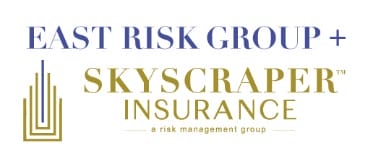Errors & Omissions Insurance: Everything You Need to Know
Errors & omissions insurance, also known as professional liability insurance, provides valuable protection for professional service providers from claims of negligence or failing to perform professional duties correctly.
Anyone who provides financial services, doctors, and lawyers, requires this type of insurance. Here’s everything you need to know about E&O insurance before you purchase.

What is E&O Insurance?
Errors and omissions insurance is a form of liability insurance that is typically required for professionals who provide any type of advice or service. Professionals who don’t have E&O insurance can be held liable for up to millions in damages. With E&O insurance, your company can eliminate these potential liabilities and cover the costs of lawsuits.
What Does E&O Insurance Cover?
Errors and omissions insurance provides coverage for almost every alleged claim that is not considered an intentional act:
- Alleged or actual negligence claims
- The cost to defend your business
- Libel or slander claims
- Infringement upon copyrights
- Coverage provided on a worldwide basis
- Coverage for temps, independent contractors and remote employees
- Actions brought from services provided in the past
- Financial claims and damages
Any business or construction insurance that holds themselves out as a professional or expert is subject to an error & omission claim. Any business that is required to be licensed to operate is especially susceptible to these types of claims, and the most expensive part of the claim may be just defending your business. There are particular claims that may not be covered, however:
- Claims for bodily injury or property damage
- Employee matters such as wrongful termination
- False advertising or intentional slander and libel
- Intentional fraudulent acts
- Intentional infringement of patents and trade secrets
- Intentionally exposing personally identifiable information
For example, if an insurance specialist doesn’t procure adequate commercial vehicle insurance for a client, a client could make a claim against the against in case of an accident. In this case, E&O insurance can help the agency cover the costs of the lawsuit.
What Doesn’t E&O Insurance Cover?
There are some exclusions to what errors and omissions insurance covers, including claims from events that occurred before your policy’s retroactive date. E&O insurance also doesn’t cover claims filed after your policy’s extended reporting period, and it doesn’t cover every type of liability claim.
Errors and omissions insurance doesn’t cover:
- Property damage
- Customer injuries
- Employee discrimination lawsuits
- Vehicles used by a business
- Damage to business property
Who Needs E&O Insurance?
To put it simply, any business offering a professional type of service is susceptible to making an error. Since your policy will also cover employees, the business owner will not need to fret each day an employee is working on their behalf. It is logical to believe that an employee may not use as much diligence as their employer when performing services so the insurance policy can act as a safety net on behalf of the employer.
In short, anyone who provides a service requires E&O insurance, including:
- Financial services
- Insurance specialists
- Doctors
- Lawyers
- Wedding planners
How Much Does Errors and Omissions Insurance Cost?
There are several factors that impact your errors and omissions insurance cost, including your industry and type of business.
On average, the cost of E&O coverage is $500 to $1,000 per employee, per year. Let’s say your business has 50 employees. That means you can estimate your E&O insurance premium between $25,000 and $50,000 per year.
There are a few ways to save money on your E&O premium:
- Pay Entire Premium Upfront: if you choose to pay your insurance premium once a year instead of monthly, it will cost you less, even though it requires less money to make smaller payments each month.
- Keep Continuous Coverage: if you want to collect insurance benefits, your professional liability policy must be active.
E&O Insurance Examples
Let’s say you are contracted as a marketing consultant to create a logo and other advertising material for a new product. You then unintentionally use a logo design very similar to a competitive product and your client is sued and sues you as a result. In this case, your errors and omissions policy will respond by offering defense costs and the funds that may be needed for a settlement or financial award by the court.
Another example might be that you are hired as an independent contractor to offer IT technology consulting for your client. As a result of your service, a virus is introduced into your client’s system that allows a hacker to access the client’s database. In this instance, your client is more than likely to bring an action against you for failure to perform professional services, and your errors and omissions policy will respond.
There may even be instances when your policy will need to respond when you haven’t made a mistake. Your business could very well be blamed for a system failure that you had no control over. Even though this may not be an error on your part, you will need to respond to action and if you have the proper liability insurance in place, the insurance company will foot the bill.
Conclusion
Any professional, from the neighborhood barber to the local law firm, should consider purchasing E&O insurance to prevent costly lawsuits. And let’s not forget that in many cases you may be required to have it by the state they operate in, just to open for business.
Are you still confused about E&O insurance or you need some help with getting a quote for your business? Contact us today and get all the information you need fast and for free!
